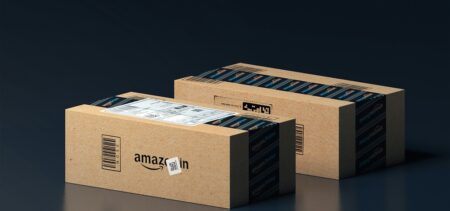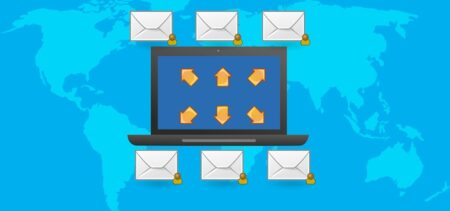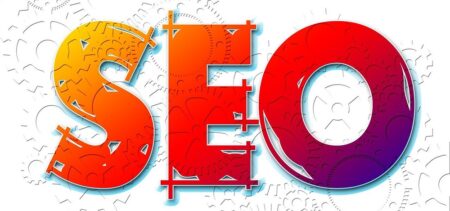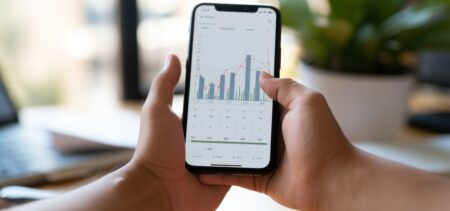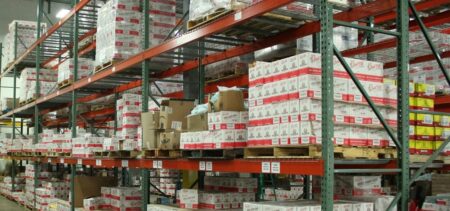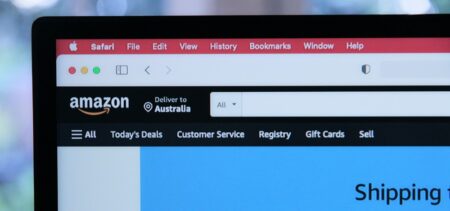The following is a guest post by Marcus Taylor of VentureHarbour.
Email marketing accounts for over 7% of all ecommerce transactions, making it the second most effective ecommerce marketing channel behind search (15.8%).
Despite email being around for over 21 years, we’ve never had the opportunity to segment and personalize email marketing at the scale we can today. With behavioral-triggered email marketing and the ability to segment customers down to the finest distinctions, it’s no surprise that email marketing continues to grow in effectiveness.
In this post, I’m going to share ten strategies that you can implement in your email marketing to significantly boost your ecommerce site’s revenue.
Before we go into these tips, it’s important that you’re using email marketing software that won’t hold you back.
Many of the tips in this post require integration between your shopping cart and email list, automation, and list segmentation. In my opinion, these are not ‘nice to haves’, but essentials for highly effective ecommerce marketing.
Which Email Marketing Software Is Best For Ecommerce?
There’s no general consensus or one-size fits all solution when it comes to email marketing software. Budget, feature requirements, and personal preference all play an important role in determining what’s best for you.
That said, there are some email marketing tools that are better than others, and when it comes to ecommerce marketing you’d be well advised to look beyond these traditional email marketing tools at marketing automation services designed with ecommerce in mind.
It’ll become clear throughout this post why features like automation and event-triggered campaigns are so valuable for ecommerce marketing, so I won’t go into too much depth here. If you’re yet to choose an email marketing tool, or are using one that doesn’t offer these features, I’d strongly recommend looking into them.
With that covered, let’s begin.
#1 Incentivize customers to review the product they’ve bought via email
There are countless case studies highlighting the positive impact of product reviews. After running an email-based review promotion on 90,000 products, Argos found that products with reviews had a 10% higher conversion rate than those without.
Figleaves also noticed a similar improvement, reporting a 12.5% increase in conversion rate on products with reviews compared to those without. Interestingly, they also noticed an 83.85% increase in conversions on products with 20+ reviews.
While these numbers speak for themselves, gathering reviews is easier said than done. One of the best strategies to encourage them is to offer a competition-based incentive via email, similar to this brilliant example from Boden.

This strategy works best when set up as an automated personalized email that’s scheduled to customers a few days after they receive their product.
You’ll want to experiment with the timing of this email, along with the prize offered, to get the maximum number of product reviews. This leads us nicely onto our next tip; A/B testing.
#2 Use A/B Testing To Optimize Open & Click-Through Rates
If you’re not already convinced of the value of email A/B testing, consider that during his election, Barack Obama’s team found, through email A/B testing, that one subject line generated $403,600 in donations, whereas another variation generated $2,540,866.
Generally speaking, when we talk about email A/B testing, we’re referring to creating multiple variations of either the subject line or body content to identify which one has the highest engagement or conversion rate.
 In an ideal world, you’d A/B test every email you sent out. In practice, this can be quite time consuming, so you’ll need to figure out which emails would have the biggest impact on your bottom line if they had a higher engagement rate.
In an ideal world, you’d A/B test every email you sent out. In practice, this can be quite time consuming, so you’ll need to figure out which emails would have the biggest impact on your bottom line if they had a higher engagement rate.
For ecommerce sites, an obvious example would be to experiment with different upsells and cross-sells in your transactional emails, as well as A/B testing any major retail holiday newsletter campaigns.
If you’re interested in learning more about email A/B testing, I’ve shared some more detailed and advanced techniques in a post here.
#3 Setup Cart Abandonment Emails To Identify Bugs & Improve Your Checkout Conversion Rate
Improving cart and checkout abandonment is typically one of the highest value areas to focus on when it comes to conversion rate optimisation. After all, if someone has added an item to their cart, they’re an extremely well-qualified potential customer.
So, how can you use email marketing to reduce cart abandonment?
![]()
If you’re using software that enables automation, you can quite easily setup a rule that detects whether a person visits the cart or checkout page, but not your confirmation / thank you page.
When this criteria is met, an email can be sent to them (providing you have already gathered their email address) asking them why they didn’t complete their transaction.
You can see a great example of this in action on the Flaviar website. After signing up to their mailing list, if you add any item to your cart and don’t complete the purchase, you’ll soon receive an email like the one below.

This is not only a great way of crushing technical bugs, but when worded well, can also be a valuable way to collect customer objections, that you can then address earlier in the sales funnel.
#4 Reward Your Most Loyal Customers
For most ecommerce websites, an 80/20 relationship exists between customers and total revenue. That is, a large proportion of revenue is typically driven by a relatively small number of loyal customers.
Howards Storage World found that by categorising their customers into five categories based on engagement and loyalty, and targeting certain categories with gift card incentives, they were able to increase their short-term revenue by $250,000.
Their most loyal group of customers had a gift card redemption rate of 34%, representing $105,000 of the total revenue driven from this campaign.
#5 Reactivate Your Dormant Customers
Interestingly, in the same study as above, the results from the semi-dormant portion of their customer base were even more impressive than their most loyal customers.
This group, who hadn’t shopped with Howards Storage World in over 12 months, represented a $108,000 increase in revenue ($3,000 more than the most loyal customers), and had an average spend 16% higher than the most loyal customers.
There are a few good lessons in that we can take away from this case study. The first is to segment your customers by loyalty and target them with campaigns that are relevant to their level of activeness.
The second lesson is that, somewhat surprisingly, it’s sometimes more profitable to focus on reactivating dormant customers than incentivizing loyal active ones.
If you want to take this one step further, you could automate this whole process using event-based triggers. For example, if a customer spends 25% above your average order value, you could add them to a sequence of ‘reward’ emails. Alternatively, if a customer hasn’t purchased anything within 12 months, you could create a ‘reactivation sequence’ to incentivise them to make another purchase.
#6 Be Prepared For Product Seasonality & Retail Holidays With a Newsletter Calendar
Too often, marketers end up writing their valentines day campaign on February 13th, and their Halloween campaign on October 30th. Considering how much creative and commercial potential there is in these events, it’s important to have a system that ensures you’re always one step ahead of the competition.
One of the easiest ways to ensure you’re never rushing to send a campaign out is to build a 12-month newsletter calendar that includes both retail holidays (there’s a great tool for finding these here) and events specific to your own business’ seasonality.
While many email marketing tools have a calendar feature built in, I personally prefer using a free tool called Trello.
Below is a screenshot of the editorial / newsletter calendar we use for Qosy. What I find particularly useful with Trello is that different members can easily add suggestions and ideas for upcoming newsletter campaigns. On top of this, you can also set automatic reminders to ensure that you begin working on campaigns well in advance of their send dates.


If you’re interested in setting up a calendar like this, I recommend reading Joe Williams’ post on the Blueglass blog, which walks through how to setup a content calendar on Trello.
#7 Surprise Customers With Free Store Credit
Earlier this year, Mark Macdonald shared a great case study here on Shopify about a company called Petflow who sent an email to all of their customers with $4.25 in store credit to use within 24 hours.

While the results of this campaign are unknown, I think it’s fair to call this is a brilliant piece of marketing. Instead of giving customers an arbitrary 10-15% off their next purchase, the store credit approach tells customers specifically what they are losing by not taking action within the next 24 hours.
Considering that loss aversion is a very powerful motivator, I’d be surprised if this campaign didn’t cause a peak in their transactions. The next time you’re planning to send your customers a % discount, consider giving them a specific amount of store credit to use instead.
#8 Make Your Transactional Emails Count
Your transactional emails should primarily tell the customer the status of their order. This doesn’t, however, mean that you can’t use them as an opportunity to engage the customer or upsell other products.
In a study by Experian, they found that adding cross-sell recommendations in shipping confirmation emails increased transaction rates by 20%.

EasySMTP also found that adding links to social media profiles in receipt emails increased the CTRs of these emails by up to 55%.
Needless to say, transactional emails don’t need to be dull notifications. With a bit of creativity and personalization, they can become powerful hooks to drive engagement and repeat customers.
#9 Setup Milestone Campaigns For Birthdays & Anniversaries
In a study of 10,000 birthday and anniversary emails sent by 53 Experian Cheetahmail customers, they found that that personalized birthday mailings had almost five-times the transaction rate of standard bulk mailings. Transaction rates for anniversary mailings were almost six times higher than standard bulk mailings.

In the same study as above, Experian found that giving a ‘$X off’ gift had the highest transaction rate and revenue per email, when compared to other percentage-based, point-based, or free shipping gifts.

#10 Take Your Email Marketing Beyond The Inbox
Over the next few years, we’re likely to see a lot more ecommerce companies combining their email marketing campaigns with related social advertising.
In a study where a leading retailer in the US targeted 925,000 email subscribers with both its regular emails and coordinated Facebook ads found that subscribers who received both were 22% more likely to make purchases than those who only received emails.

The potential of what you could do with this strategy is mind-boggling. Imagine purchasing a product online to then finding an advert on Facebook five minutes later with a popular upsell product. When they then visit their inbox, if they still haven’t bought the upsell you could send them an email with a discount on that specific upsell product.
Wishpond have written a great post on how to set up these kind of adverts, along with some good ideas to experiment with here.
Conclusion
We’ve only just scratched the surface on what’s possible with ecommerce email marketing in this post.
There are virtually no limits on how far we can segment customers, target them across multiple channels, and personalize our communication. The potential for increasing sales through email marketing is not to be underestimated.
Hopefully this post has sparked some ideas that you can experiment with in your own business. If you have any questions, or any of your own tips / stories to share, please post them in the comments below.


